

 The South African
The South African
Much has been written about the events of the Anglo-Boer War (1899-1902), yet very little has been said about the 'Rhodesian' element in that conflict. This is surprising, considering that the 1896 Jameson Raid was launched from that direction. There had been a longstanding animosity across the Limpopo since the territory was colonised by Rhodes' British South Africa Company (BSACo) and the build-up of imperial forces along this border was specifically mentioned in the official correspondence prior to the formal Declaration of War. It would seem that these events have been forgotten for want of spectacular military blunders and a dearth of contemporary media coverage. Clearly the role of media hype is not a new phenomenon. Only Colonel A S Hickman (1970,1975) has attempted to deal with the events of the north-western front between the Transvaal Republic and the neighbouring 'British territories' (see map 1). This is the first of a series of articles which summarises my own work (Burrett 1999, 2001, 2002). I am only sorry that it may seem one-sided, dwelling mainly with the British perspective. This is unfortunate as there are always two sides (at least) to any war, but to date I haven't had much luck with tracking down material from the Afrikaner point of view, not for want of trying. Hopefully these articles will generate greater interest and stimulate feedback.
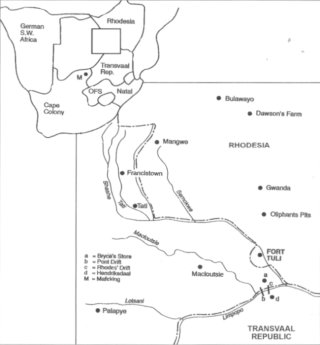
Map 1.
To get things into perspective, we must look at the geography of this story. Most of the action occurred west of the modern towns of Beitbridge and Messina near the meeting point of Zimbabwe, Botswana and South Africa. At that time, Rhodesian authority did not stop at the settlement of Fort Tuli on the Shashi River (now Shashe) but extended right down to the Limpopo River (also called the Crocodile in contemporary sources). This section between Fort Tuli and the Limpopo was called the Disputed Territory and is now part of Botswana. Along the Limpopo there were several drifts (see map 2). These were important flash points in the early days of the Anglo-Boer War.
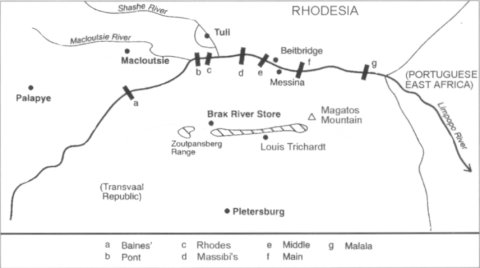
Map 2, showing the Limpopo drifts and associated sites.
It must be pointed out that I have used the term 'Boer' in
these articles to include all those fighting on the side of
the Transvaal Republic. Likewise, I use the contemporary term
'natives' when discussing the indigenous peoples of
the area - who were a mixture of Tswana, Sotho, Kalanga and Venda
identities. In both cases, these are merely
historical terms without negative connotations.
Rob Burrett
End of box
Tensions were always rather high along this frontier. British control in Bechuanaland and the territories beyond the Limpopo remained a very sore point with the Transvaal Boers. The Grobler Incident (1888) and the thwarted Adendorff Trek (1891) were held as hostile acts that had circumscribed the frontier society by their age-old English rival. The subsequent Jameson Raid of 1896 has been seen rightly as the first real act in the Second Anglo-Boer War. This failed escapade made it inevitable that the Transvaal and the British Imperial authorities could not coexist. A constant nagging fear of another backdoor attack lingered in the minds of the Boer military leaders, especially when, in 1899, two large military corps were established along the north-western border - our story here. Surely, knowing Boer sensitivities concerning the Raid, the British authorities were merely taunting their opposition to declare war? Indeed, this was the result.
As early as June 1899, both sides were publicly building up substantial stocks of military hardware and provisions. In the meantime, the Imperial authorities laid plans. On 7 July, Lord Wolseley announced in London that the General Officer Commanding in South Africa had been authorised to 'make arrangements in case the failure of political negotiations rendered necessary the sending of an expeditionary corps' (Amery, 1900: p 301). Transport for the necessary troops was to be put in place, and several 'Special Service Officers' were ordered to proceed to South Africa. These included Colonel R S S Baden-Powell of the 5th Dragoon Guards, who was to take command (or B-P as he was affectionately known in the jingoistic press of the time, see photograph 1).
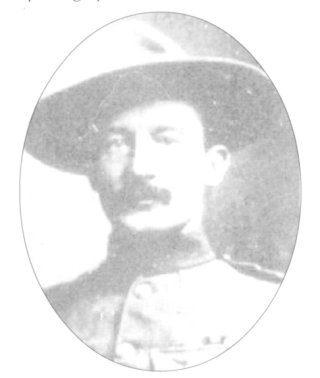
Photo 1: Col R S S Baden-Powell (Photo: SANMMH)
Officially, the duty of the Special Service Officers was to organise the residents, police and other local forces at various points along the Bechuanaland and Rhodesian frontiers. However, there was certainly a more subversive reason for their presence. Lord Wolseley's full orders to Baden-Powell were that, in the case of inevitable hostilities, he was 'to endeavour to demonstrate with the largest force at your disposal, in a southerly direction from Fort Tuli, as if making towards Pretoria' (Jeal 1990: p 211 ) - almost a rerun of the failed Jameson Raid. For this purpose, he was to raise a regiment of 590 irregular soldiers in Rhodesia and the Cape Colony. Not long after, this order was amended to the raising of two regiments.
Clearly, it was Imperial intention that Baden-Powell's presence on the frontier should scare the Transvaal authorities, while diverting a considerable number of Boers from action elsewhere along the Natal and Cape borders. In addition, these regiments were expected to protect British territorial sovereignty, and to discourage the native population from supporting the Boers or seeking their own autonomy. Otherwise B-P, who was given title 'Commander-in-Chief North-West Frontier Forces', was effectively allowed to act more or less at his own discretion.
Closer to home, several local defence corps were established or strengthened in many of the small railway towns along this sensitive border - Vryburg, Mafeking, Lobasti, and Francistown. Bulawayo witnessed the formation of the Southern Rhodesia Volunteers (SRV) and, at an emotionally-heated mass meeting held on 24 July 1899, a large number of men enlisted for 'the defense of Rhodesia in the case of Boer aggression' (CTW 2/8/99). In addition to this, the BSACo began arming many of the outlying mining camps and loyal natives in the southern parts of the country. Locally tensions were rising.
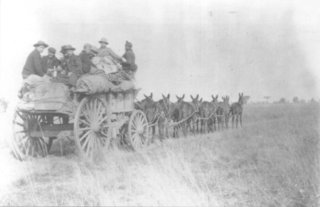
Photo 2: Special Service officers head for Bulawayo
on board a mail van (Photo: National Archives, Zimbabwe)
Baden-Powell and several fellow officers arrived in Cape Town on 25 July. They did not linger and B-P sped northward, arriving in Bulawayo on 2 August (see photograph 2). Not long after, on 5 August, a party of British South Africa Police (BSAP) under Sergeant J McGee was ordered from Bulawayo to Fort Tuli. A small group accompanying a 12.5-pound field gun followed them the next day. This advance party was to begin re-establishing the defences at Fort Tuli which, at that time, was a lonely backwater which had more or less been abandoned since 1895. The Fort, constructed by Rhodes' Pioneers in 1890, had by then long since fallen into disrepair. This was restored with the re-excavation of the outer trenches and the construction of new defensive walls. Later, when numbers grew, this position was extended northward onto an adjacent, much larger, flat-topped hill, while a series of outer defence works were also built on nearby hills (see map 3 & photograph 3).
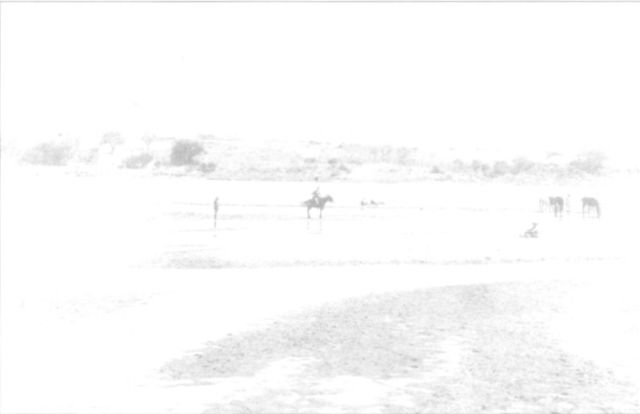
Photo 3: Fort Tuli (Photo: National Archives of Zimbabwe)
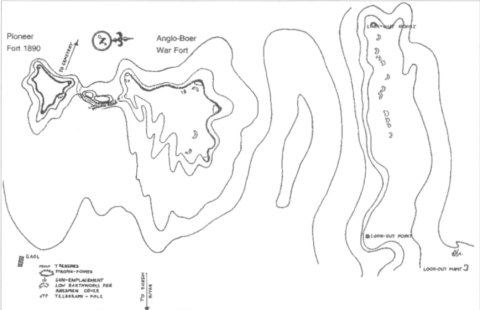
Map 3: Sketch plan of the forts at Tuli, Zimbabwe
(Source: Hickman, 1970, p 164)
Lieutenant-Colonel H C O Plumer, B-P's chosen man to lead this Rhodesian force, arrived in Bulawayo on 8 August. The next day, a new training camp for the proposed Special Service Corps was established on the eastern boundary of the town, although it was not until 30 September that there was active recruiting of local men. In the meanwhile, from 14 August, recruitment had begun in the Eastern Cape, Kimberley and Cape Town. The final roll included 450 men. They were enlisted initially for a three month period with pay for privates 5/-; corporals 6/-; sergeants 7/-; and staff-sergeants 8/ 6d per day. In addition there was the provision of all rations, clothing and equipment (CTW 16/8/99).
In addition, another force, under Lieutenant-Colonel C O Hore, was enlisted at Ramathlahama, near Mafeking. It was to this force that B-P was to attach himself. Many of the volunteers were raw, drawing the following rather scathing comment: 'a number of men... arrived on foot from Johannesburg and Krugersdorp seeking to join the frontier force, but the recruiting officers, not being admirers of the average Rand tramp, rejected the majority' (CTW 6/9/00). Such was the documented snobbery of the Imperial authorities at that time.
The new recruits were kept hard at drill and this drew a considerable outcry from the Transvaal burghers. This was public war mongering and well the Imperial authorities knew it. On 21 August, B-P left Mafeking for Bulawayo to discuss strategy. The Special Service Force was renamed the Frontier Mounted Force. In turn, it was divided into two regiments: Plumer's northern corps became the Rhodesia Regiment, and Hore's more southerly Ramathlabama troops became the Protectorate Regiment. B-P determined that he would concentrate his forces at two strategic locations with the hope of focusing Boer attention rather than trying to guard the entire border, some 500 miles (800 km) of remote and dry territory from Mozambique to the northern Cape. Mafeking and Fort Tuli were chosen as these points.
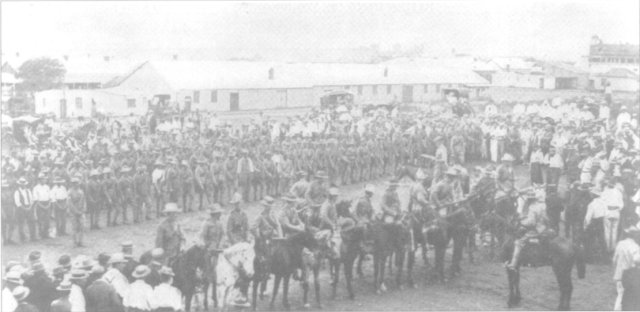
Photo 4: Col Nicholson reads instructions to Rhodesian troops
prior to their departure from Bulawayo to the front, 1899
(Photo: National Archives, Zimbabwe)
On 11 September, Lieutenant-Colonel W Bodle, I/C Matabeleland Section of the BSAP, left Bulawayo for Fort Tuli with 100 additional policemen to assist in strengthening existing police arrangements along the border, and more particularly the various Limpopo drifts. Accompanying them were a number of African policemen who were amalgamated with the Native Commissioner's messengers, who were already on site, to form the Tuli Border Guard. Their role was scouting, interviewing captive and refugee Africans from the Transvaal, and guarding the drifts. However, according to an unpublished manuscript at Police Archives, Harare, they also became involved in the fighting.
The Anglo-Boer War was certainly not a 'white man's war'. Both sides used the 'native' people and their part has generally been overlooked. Unfortunately the biases of the time mean that there are few references to these troops other than isolated, passing comments. What is apparent, however, is that both Britain and Boer lived in fear that the other would instigate native rebellion in their territories and a constant surveillance of their own people was maintained. The Boers had particular reason for anxiety since their relationships with several of the Tswana and Venda tribal leaders in this area were especially poor. Brief wars had been fought as late as 1898 and Mpofu's people had recently taken refuge in Rhodesia, not far from the border, and they were known to be in constant contact with the Imperial authorities at Fort Tuli.
Due to an acute water shortage in Bulawayo, as well as its many civilian distractions, Troops A, H, C, & D of the Rhodesia Regiment moved on 18 September to Dawson's Farm, Essexvale (now Esigodini) which was located on the Bulawayo-Tuli road (see photograph 4). Meanwhile, war efforts in Bulawayo reached full swing. The railway authorities began preparing an armoured wagon for use in the event of war, while on 19 September, a Maxim squad and a volunteer medical corps were also formed. On 23 September, after another flying visit from B-P, it was decided that the Rhodesia Regiment should finally move southward to Fort Tuli. However, this was delayed due to a lack of en route water and pasture for such a large force. This had first to be laid on by the BSACo authorities.
In the meantime, Bodle of the BSAP who had arrived at Fort Tuli a week earlier, had proceeded to Rhodes' Drift on the Limpopo. This was the most important of the drifts and a small police camp had been established there in April 1899 to control the movement of animals, for disease control purposes, and to levy duties on all goods being imported into Bechuanaland and Rhodesia. It had been decided that this would be a strategic location on the Transvaal border and the Police enlarged and fortified the camp that was later to see a fair amount of action in the conflict. To facilitate communication with Rhodes' Drift, a telephone line was erected from Fort Tuli.
While all of this was happening to the north of the Limpopo, or 'Crocodile River' as it was called by the Boers in those parts, preparations were also taking place in the northern Transvaal. All able-bodied men were informed of their duties in the two regionally based commandos the Zoutpansberg Commando in the north (about 1 287 men); and the Waterberg Commando in the north-west (732 men). These commandos were placed under the joint command of Assistant Commandant-General F A Grobler (see photograph 5). His position was not an easy one as there was considerable friction between the commandos and an even greater reluctance to cross the border in force - so different to General Cronje's forces around Mafeking and elsewhere in Natal and the Cape Colony.
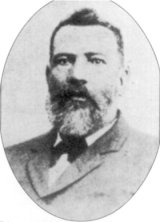
Photo 5: Assistant Commandant-General
F A Grobler (Photo: SANMMH)
Clearly Pretoria, anxious in case of another backdoor attack, had begun mobilising its men. As early as 1 October, Imperial reconnaissance reported that some members of the Zoutpansberg commando were forming a laager on the Brak River, while outlying parties were already noted at all of the drifts along the Limpopo/Crocodile River. In the final days prior to the Declaration of War, all the eligible men were called to camp. The Zoutpansberg Commando came together on 11 October 1899 at the Brak River Store, some 50km south of the Limpopo on the western end of the Soutpansberg Range, while the Waterberg Commando, members of which were very disinclined to action, gathered near Nylstroom.
After receiving news, on 12 October, of the Declaration of War, Grobler joined the Zoutpansberg Laager to discuss strategy. It was agreed that the Waterberg men, with Grobler going south to join them at the Limpopo-Palala confluence and to spur them on, would move directly west to destroy the railway in central Bechuanaland. In the meantime, the Zoutpansberg Commando would move across the dry plains of the Limpopo to face Plumer. This apparent discussion only with one portion of his wider force undoubtedly ostracised the men of the Waterberg Commando and their reluctance to subsequent action should be interpreted in this light (cf. Hickman 1970: pp 176-8).
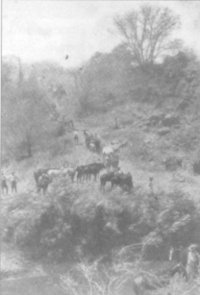
Photo 6: Col Plumer's force
watering their horses en route to Tuli
(National Archives Zimbabwe)
The Zoutpansberg men were placed under the command of Assistant-General H C J van Rensburg and large groups began arriving on the Limpopo from the 15th, reaching full commando strength by 19 October. Their main camp was on a farm called Hendriksdal on the Transvaal side of Rhodes' Drift. This was under Veld-kornets J Kelly and H W Alberts. Other sections were placed at Middle Drift (under Commandant Botha), Massibi's Drift (under Veld-kornet Venter), and Pont Drift (under Veld-kornet A Z A Briel, who was to prove the most motivated of the commanders).
Returning to the Rhodesian side, most of the Rhodesia Regiment left Dawson's Farm, Essexvale, on Thursday, 29 September 1 899, for an as yet unknown destination 50 miles (80 km) nearer to Fort Tuli, finally departing for Fort Tuli itself on 3 October 1899. The next day, an additional troop (F) consisting of Bulawayo volunteers was called upon to leave employment and take up arms. All Imperial forces in Bechuanaland were also requested to strengthen their border posts with the Transvaal.
On 5 October, the Fort Tuli Native Commissioner, who had just returned from a circuit of inspection of the various native kraals along the border, reported that he had been informed 'that ten armed Boers had crossed the border and raided native cattle in Rechuanaland near Rhodes' Drift' (CTW 11/10/99). If this raid is true, then it must surely be classed as the first cross-border action in the Anglo-Boer War in the Tuli area, predating even the official Declaration of War. However, in all probability it was unsanctioned livestock raiding, something in which ALL parties were involved throughout the conflict.
After leaving Bulawayo on 7 October, F Troop, under the command of a Rhodesian Colonel J A Spreckley, joined the remnants of the Rhodesia Regiment at the latter's camp near Essexvale, proceeding from there in the direction of Fort Tuli. Fortunately, for both the men and the horses, by then there had been good rains along the route. These had cooled temperatures and improved the water and grazing conditions considerably. However, the resultant mud caused considerable transport delay (see photograph 6).
Scouts of the Rhodesia Regiment column began to assemble at Fort Tuli on 9 October, with Plumer arriving ahead of the main column on the following day. The first full troop arrived on the 11th, camping just outside the decaying settlement on the west bank of the Shashe River. The approach of this troop was undoubtedly one of the final acts of provocation in the War that was finally declared at 17h00 on 11 October 1899.
Further reading
To allow for a more free flowing structure to this series of articles, I have removed most of the cross-references and additional footnotes. Only those related to direct quotations are presented here. Interested readers are advised to contact myself or look at the original, and expanded, versions to gain a fuller picture.
Amery, L S, The Times History of the War in South Africa (Sampson Low, Marston & Co, London, 1900).
Burrett, R S, 'Events in the Second Anglo-South African War, 1899-1902, in the wider Tuli Area, Zimbabwe-Botswana' in Heritage of Zimbabwe, No 18, 1999, pp 21-57.
Burrett, R S, 'The Far North-Western Front. Events in the Second Anglo-South African War in the Tuli Area, Zimbabwe-Botswana' (Unpublished Report, Archives & Library, South African Military History Museum, Johannesburg, 2001).
Burrett, R S, 'Of Ghosts, Graves, Monuments and the Dead at Fort Tuli, Zimbabwe' in Heritage of Zimbabwe, No 21, 2002 (in press).
CTW = Cape Times Weekly Edition, issues dated.
Hickman, A S, Rhodesia Served the Queen, Volume 1, (Rhodesian Army, Salisbury, 1970).
Hickman, A S, Rhodesia Served the Queen, Volume 2, (Rhodesian Army, Salisbury, 1975).
Jeal, T, The Boy-Man (William Morrow & Co, New York, 1990).
End of box
Return to Journal Index OR Society's Home page
South African Military History Society / scribe@samilitaryhistory.org